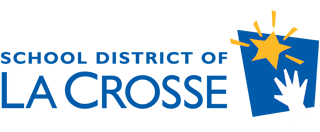Programs & Services
Cultural & Family ConnectionsMission
Our mission is to educate, support, and engage our staff, families, and students on topics and issues of culture, race, and social justice. We strive to provide on-going programs that focus on academic success, students/staff development, advocacy, and community outreach.
The Cultural Liaison Program is designed…
…to support families and students of racially and ethnically diverse backgrounds
…to serve staff and administrators through conversations and presentations on racially and ethnically diverse topics that will enhance the understanding of all
…to be engaged with various cultural initiatives and programming within the La Crosse Community
Community & Family Resources
Here are some African American websites and book titles which may be of interest to African American students and families:
Clint Smith: How to raise a black son in America
Quicklinks
Contact Information
NaoHoua Tony Yang
District Cultural Liaison
(608) 789-6664
Hello, or as we say in Hmong, “Nyob Zoo.” My name is NaoHoua Tony Yang. I am proud to serve as the cultural liaison for the La Crosse School District. I believe that my position is important in our schools to help our Hmong students and families navigate the success of our public education system. Another important role that I have is to support teachers, administrators, and community agencies as they work to meet the challenging needs of all students.
Over the years, we have created wonderful opportunities and programs to allow our students to learn, grow and be successful, and we will continue to keep this promise. I truly believe that the programs we offer help our students become better individuals and citizens.
If you are interested in learning more about what I do or would like to visit any of my programs, please contact me at (608) 789-6664.
Thank you!
Q (Quartrell) Roberson
District Cultural Liaison
(608) 789-6620
Vincent Hamilton
Home-School Coordinator
vincent.hamilton@ho-chunk.com
Areas of Focus
Families and Students
- Connect and build relationships with racially and ethnically diverse families to increase their involvement in Schools
- Promote academic success and leadership among racially and ethnically diverse students
- Promote strategies for resolving conflict and for addressing the dynamics of difference with all students
- Provide programming to support racially and ethnically diverse students and families
District/School
- Provide district-wide presentations and conversations on various racially diverse topics to enhance understanding of racially diverse populations.
- Examine and develop district-wide diversity and inclusion policies
- …Increase cultural awareness for district leadership and staff
- …Support other culture-related initiatives in the district
- …Provide input on district initiatives and policies
- Collaborate with selected schools and assist with culturally responsive systems implementation
- Act as a resource and provide advocacy for the district relative to cultural and race issues
Community Engagement
- Encourage students to be active members in their school and community
- Support and collaborate with community organizations that enhance and promote racially and ethnically diverse populations
- Develop relationships with the different racially diverse communities in the area
Key Concepts of Culturally Responsive Systems
- Culture is the lens through which we view the world. It is the context within which we operate and make sense of the world and it influences how we process learning, solve problems, and teach. Cultures are dynamic, complex, and ever-changing.
- A number of studies suggest that low school performance may be linked, in part, to the lack of congruence between the cultures of the students’ families and communities and the cultural norms embedded in the expectations, policies, procedures, and practices of schools.
- Every child needs opportunities to learn the knowledge, skills, and dispositions necessary for living in a multicultural society. Some of these include…
- Inclusiveness – represents a broad range of experiences, people, and understandings and the interdependence of groups
- Diverse perspectives – recognizes multiple constituencies and competing constructions of understanding
- Selfknowledge – Fosters a sense in students of how their own identities have been constructed by the complex interplay of historical, social, political, economic, and even geographic factors
- Social justice – emphasizes constitutional rights, the development of critical understanding of actions and decisions, and the promotion of social action
- Helping all staff to become culturally responsive is an ongoing process that evolves as the staff learn more about themselves, their work, and their own cultures. It involves staff looking at their own cultural background and upbringing, analyzing how their own “cultural view” influences the way they see the world, and then striving to understand how their cultural view influences the way we understand our students and families.
- It takes a safe and secure space to explore meaningful questions and share answers.
- Students need opportunities to explore and connect with others within their own culture. They also need opportunities to explore and connect with students from various cultural backgrounds.
- Students need opportunities to work together to make their community in and out of school what they want it to be.
- Culturally knowledgeable students are able to actively participate in various cultural environments.
- It is the responsibility of all staff to nurture culturally healthy youth.
- There is a positive and convincing relationship between family involvement and benefits for students, including improved academic achievement, higher grade point averages and scores on standardized tests, enrollment in more challenging courses, more classes passed and credits earned, better attendance, improved behavior both at home and at school, better social skills and adaptation to school holding across families of all economic, racial/ethnic, and educational background and for students of all ages.
- Instruction that is provided in a context meaningful to the student and in a way that values their culture, knowledge, and experiences fosters students’ motivation and engagement.

